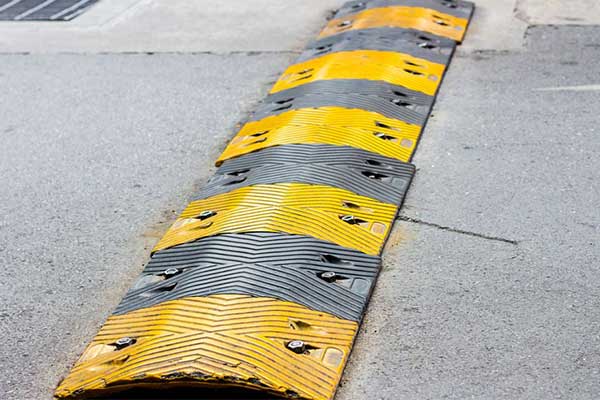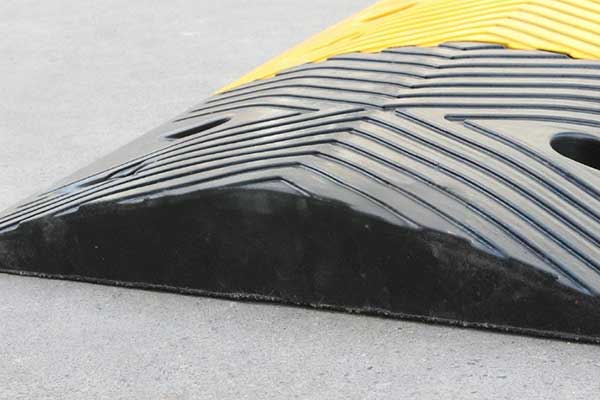How Long Do Rubber Speed Bumps Last?
Rubber speed bumps are widely used in parking lots, residential areas, and commercial properties to control vehicle speeds and enhance road safety. However, one of the most common concerns for property owners and facility managers is their longevity. How long do rubber speed bumps last? In this article, we will explore the factors that affect their lifespan and how to maximize their durability.

Average Lifespan of Rubber Speed Bumps
On average, rubber speed bumps last between 3 to 10 years, depending on various factors such as material quality, installation conditions, and maintenance. Compared to asphalt or concrete speed bumps, rubber options are more flexible, resistant to cracking, and environmentally friendly, but they still require proper care to ensure longevity.
Factors That Affect the Lifespan of Rubber Speed Bumps
1. Material Quality
- High-quality rubber with UV resistance and durable polymers lasts longer than cheaper alternatives.
- Recycled rubber speed bumps are more eco-friendly but may wear out faster than those made from virgin rubber.
2. Traffic Volume and Load
- Areas with heavy traffic, including trucks and buses, can reduce the lifespan of rubber speed bumps.
- In low-traffic areas, rubber speed bumps tend to last much longer.
3. Weather Conditions
- Exposure to extreme temperatures, direct sunlight, rain, and snow can impact rubber durability.
- UV exposure can cause fading and brittleness over time, while freeze-thaw cycles may weaken the material.
4. Installation Quality
- Proper installation with secure anchoring bolts ensures the speed bumps remain in place.
- Poorly installed speed bumps may loosen, leading to quicker wear and tear.

Comparing Rubber Speed Bumps to Other Materials
| Material | Average Lifespan | Pros | Cons |
|---|---|---|---|
| Rubber | 3 – 10 years | Flexible, easy to install, cost-effective | Can degrade with UV exposure and heavy loads |
| Plastic | 5 – 7 years | Lightweight, resistant to weather | Less durable under heavy traffic |
| Asphalt | 10 – 20 years | Durable, suitable for high-traffic areas | Requires professional installation, cracks over time |
| Concrete | 15 – 25 years | Extremely durable, low maintenance | Expensive, difficult to install, harsh on vehicles |
How to Extend the Lifespan of Rubber Speed Bumps
To maximize the durability of rubber speed bumps, consider the following tips:
- Choose High-Quality Materials: Invest in UV-resistant and heavy-duty rubber speed bumps.
- Ensure Proper Installation: Use high-quality anchors and follow manufacturer guidelines.
- Perform Regular Maintenance: Inspect for loose bolts and replace worn-out parts as needed.
Conclusion
Rubber speed bumps are an excellent choice for slowing down traffic in various environments. With proper installation and maintenance, they can last anywhere from 3 to 10 years. While they may not be as long-lasting as concrete or asphalt, their flexibility, ease of installation, and cost-effectiveness make them a preferred option for many businesses, municipalities, and property owners.
Need High-Quality Rubber Speed Bumps for Your Project?
As a trusted supplier of high-quality speed bumps, we offer durable, weather-resistant rubber speed bumps designed to withstand heavy traffic and harsh environmental conditions. Contact us today to learn more about our speed bump options.

